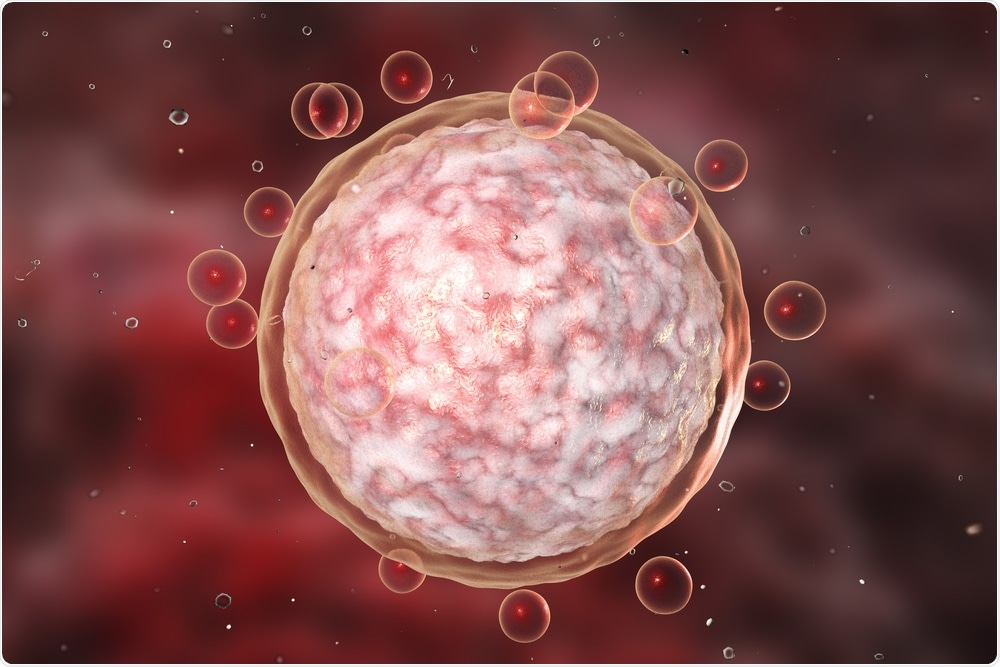A new study, published this month in the American Journal of Human Genetics has found that there is a high level of meiotic recombination failure in human immature egg cells (oocytes). The findings highlight the surprisingly high proportion of oocytes that are destined to be chromosomally abnormal, with 7% containing one or more exchangeless chromosome pairs.

Image Credit: Kateryna Kon/Shutterstock.com
Human egg cells prone to chromosomal errors
Previously, evidence has emphasized the relationship between maternal age and the likelihood of chromosomally abnormal eggs. For many years, medical professionals have understood that women who conceive later in life are more likely to develop chromosomally abnormal eggs. Research has shown, for example, that the chance of giving birth to a baby affected by Down syndrome drastically rises with maternal age.
While these statistics are useful in understanding the nature of chromosomal abnormality, they can also be distressing to women who conceive older, who often feel a sense of guilt at having a child with a syndrome related to chromosomal abnormalities.
The findings produced by the team at Washington State University, led by Terry Hassold, demonstrate that chromosomal errors can occur irregardless of maternal age. Their findings show that errors are, in fact, extremely common in human egg cells, although the research was not able to conclude why this is the case.
Investigating the incidence of exchangeless chromosomes
Human egg and sperm cells are produced as products of a cell division process known as meiosis, where a single cell divides twice, creating four cells containing just one copy of each maternal and paternal chromosome.
During meiosis, the copies of the maternal and paternal chromosomes are created and exchanged via meiotic recombination. It is during this phase of meiosis that abnormal numbers of chromosomes can be created. Aneuploidy is the term given abnormal numbers of chromosomes within a cell.
While scientists have long known about the effects of recombination failure on aneuploidy, the impact of this failure had remained unknown and underestimated. Until now, no study had been conducted that directly attempted to measure the incidence of exchangeless chromosomes in a sample of human oocytes.
Hassold and his colleagues at the University of Washington designed a study to address this gap in the research. They conducted an analysis of exchangeless chromosomes in the fetal ovary, investigating a total of 7,396 oocytes collected from 160 tissue samples. The researchers counted all chromosome pairs that were missing MlH1, a protein associated with recombination.
The results showed that 7% of all oocytes studied contained at least one exchangeless chromosome pair, demonstrating a high incidence of recombination failure. Due to the conservative analyses employed by the team, they estimate that the real proportion of human oocytes with at least one exchangeless chromosome pair may be 10-15%.
Chromosomes 21 and 22, the smaller autosomes, were found to be those most likely to show signs of recombination failure. The findings also suggest that gestational age is positively correlated with the frequency of exchangeless chromosomes, with rates of aneuploidy 1.6 times greater in the older gestational age group.
Hassold how the high level of exchangeless chromosomes found was quite unexpected, “probably the most surprising observation was simply the high proportion of eggs that contained exchangeless chromosomes,” he continued, “we had known from previous preliminary studies and trisomic pregnancies that the value would be high, but seeing it directly in human eggs was still a little jarring.”
The next steps will see researchers attempting to identify genetic variants that may be linked to the presence of exchangeless chromosomes.
from our experience counseling couples who have experienced a miscarriage or the birth of a child with an extra or missing chromosome, it is clear that there is frequently accompanying guilt, our results indicate that quite the contrary, many of these chromosome errors are simply hardwired into human biology."
Hassold